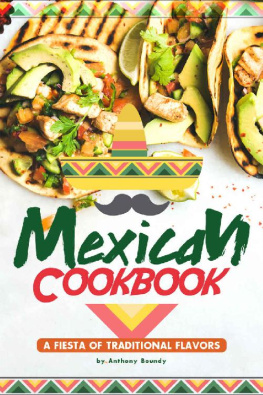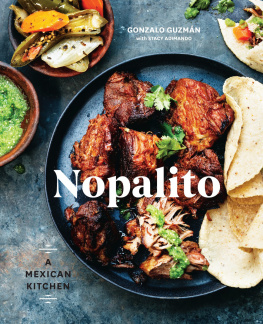
Living in Los Angeles, I was introduced to Mexican cuisine at a young age. I dont know if the first dish I tried was the beef enchiladas smothered in red sauce and cheese from the school cafeteria or the spicy burritos I got from the taco truck down the street. Growing up, I had my share of fake nachos and imposter tacos in hard shells that came from shrink-wrapped boxes, but I also had my fill of homemade tamales and steaming bowls of menudo.
However, my real education in Mexican cuisine began when my parents bought a Mexican grocery store in the San Fernando Valley.
It was the summer before I started high school, the early 80s, and the height of Valley Girl culture. After school, our friends would find my siblings and me, still in our Catholic-school uniforms, running the cash register, taking inventory, and stacking boxes and boxes of tomatoes. The banda music would be blaring from the radio while we worked beneath a canopy of colorful piatas, their tissue-paper fringe flapping in the breeze of the swamp cooler.
I learned how to pick the perfect avocado, how to wrap corn husks to make giant stacks of tamales, and how to clean the spikes off nopalitos without pricking my fingers.
I experimented with varieties of peppers, made my way through bowls of salsa, and devoured papayas doused with lime juice and chili powder.
Our customers and friends would bring us culinary wonders from their kitchensbowls brimming with pork meatballs, moist cakes sprinkled with cinnamon, and handmade tortillas still warm from their stoves. From these abuelas (grandmas) and tas (aunts), I learned secrets of each familys mole, where to get the best chocolates, and how to turn out rows and rows of enchiladas without even breaking a sweat.
I took these lessons with me to college, perfecting my soups, making my salsas spicier, and learning more of the street Spanish I have yet to master. After graduation,
I lived in Mexico and tasted the real flavors south of the border. Strangers would invite me into their kitchens where we would cook, sing, and laugh together.
The origins of Mexican food go back centuries to the culture of the Aztec, the Maya, the Toltec, and the Olmec. The nomadic Maya began to farm the land. They ate corn tortillas, made bean paste, hunted wild game, fished from the ocean, and enjoyed the tropical fruits of the region. The Aztec added to this already developed pantry the fire of chile peppers and the wonderful flavors from cacao. Then throw in the culinary influence of the Spanish, who brought wheat, domesticated animals, grain mills, and cheesemaking. With more visitors and traders to Mexico, the cuisines of France, Portugal, West Africa, the Caribbean, and South America were added to the mix, and we have the modern Mexican menu that is alive and kicking today.
A wonderful example of the richness of Mexican entrees is mole, which is a term used for a variety of thick sauces that vary in color and flavor depending on the ingredients. Each region has its own variation. Oaxaca, the heart of Mexico in both geography and food, has several different varieties. One of the most popular kinds, mole poblano, is an excellent example of how history and contact with various cultures were necessary to shape the dish. A bowl of mole poblano might contain peanuts, sesame seeds, anise, cinnamon, black pepper, sugar, salt, garlic, onion, cloves, coriander, tomato, raisins, lard, and chocolate. The individual ingredients made their way to Mexico at different times, but all of them together create a complex and delicious dish that could have only originated in Mexico.
Even American food has infiltrated the kitchens south of the border with the invention of Tex-Mex cuisine. Although the marriage of American fare and Mexican delicacies probably happened centuries ago, the term Tex-Mex started as a reference to the Texas-Mexican railway around 1875. The term wasnt used to describe food until the latter half of the twentieth century. Items such as chili con carne, fajitas, and tortilla chips all emerged from this culinary marriage and what we know as Mexican food in America has been largely shaped by this history.
Traditional Mexican food was cooked over an open fire on iron skillets (called comals) or in ceramic pots. There was no oven cooking, per se, but food was fried, steamed, or boiled. From this way of cooking emerged long-stewed meats boiled into soups, shredded into fillings flavored with chile pastes and nuts, and wrapped up in a blanket of tortillas. Seafood from the coastal lands added more flavors to the diet.
Today, we get to enjoy centuries of food traditions with minimal effort. Mexican food is so popular that ingredients are readily available almost anywhere. Although there is a time and a place for spending long hours slaving over a hot stove, I believe that we can enjoy the best of the feast without too much labor.
Ive simplified the recipes that Ive carried along from my youth, picked up along the way, and researched from my travels. I can still get a weeknight dinner on the table without compromising the delicious flavors and complex aromas that make Mexican food one of my favorite cuisines of all time.
I wrote this book hoping I could inspire home cooks to get out and bury their noses in fragrant bouquets of fresh cilantro, experiment with wonderfully fiery chiles, and explore the regional flavors of Mexico for themselves. So, get out the metate (mortar), cradle the ripe tomatoes in your hands, and get ready to start the culinary journey of a lifetime.
The Mexican pantry is filled with fragrant herbs, fresh vegetables, and dried chiles. The good news is that you probably have many of the necessary ingredients in your pantry already, but feel free to check the if any of them are unfamiliar to you.
Ive divided the ingredients list into three sections. The A-list includes those used most often and found in a Mexican kitchen. The B-list has items that you should have around if you want to make Mexican food often.
The C-list ingredients are those used for special dishes and worth having if youre an adventurous cook and want to expand your Mexican food repertoire.
Luckily, its easy these days to find the ingredients youll need to make delicious Mexican food at home. Even your non-Latino supermarket will likely have many of the items you need to get started. So, roll up your sleeves and get ready for your Mexican food adventure. Lets get cooking!
A-LIST
INGREDIENTS
BEANS
CHEESES
(see )
CILANTRO
CINNAMON
CORN
CUMIN
GARLIC
JALAPEO PEPPERS
LIMES
ONIONS
RICE
SERRANO CHILES
TOMATOES
TORTILLAS
VANILLA
B-LIST
INGREDIENTS
ANCHO CHILES
CANNED CHIPOTLE PEPPERS
CHILI POWDER
CREMA
MASA
NO PALES
PLANTAINS
POBLANO or PASILLA CHILES
TOMATILLOS
C-LIST
INGREDIENTS
ANNATTO SEEDS
CHAYOTE
EPAZOTE
HOMINY
JAMAICA
JCAMA
PILONCILLO
PRICKLY PEARS
TAMARIND PODS
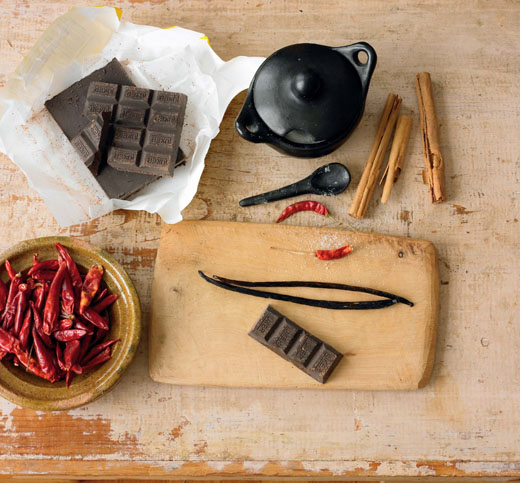
Glossary of Mexican
INGREDIENTS
ANCHO CHILE: The dried version of either poblano or pasilla chiles, this milder chile is often ground and made into powder for flavoring recipes.
ANNATTO (ACHIOTE) SEEDS: Annatto are the seeds and the surrounding red pulp of the achiote plant. Theyre sometimes used to make red food dye and are used in Mexican cuisine as a spice. Theyre slightly sweet, peppery, and earthy in flavor, with a hint of nutmeg. Achiote is sold both whole and ground, but I prefer to buy it whole and grind it myself to get the best flavor. The seeds add a wonderful flavor and color to meats, rice, and tamales.
Next page
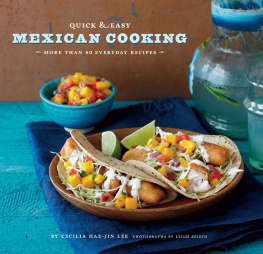



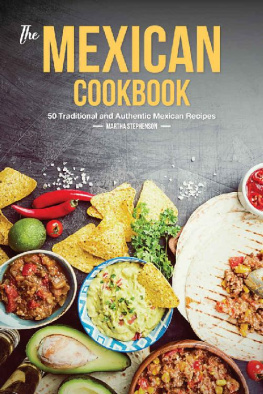
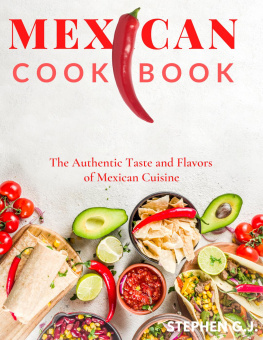
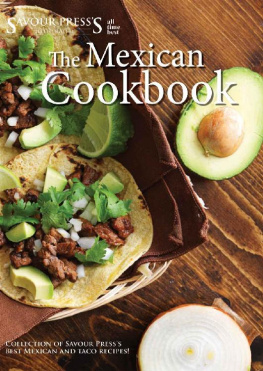
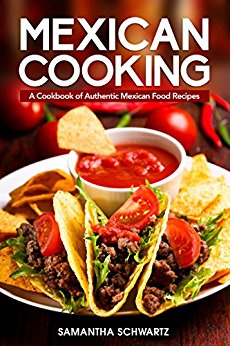
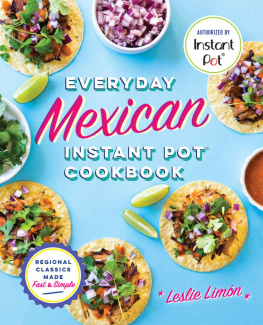
![Avery Moore - Mexican Cookbook 365: Tasting Mexican Cuisine Right In Your Little Kitchen! (Best Mexican Cookbook, Mexican Dessert Cookbook, Slow Cooker Mexican Cookbook, Mexican Salsa Cookbook) [Book 1]](/uploads/posts/book/288399/thumbs/avery-moore-mexican-cookbook-365-tasting-mexican.jpg)
